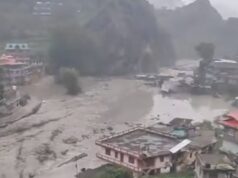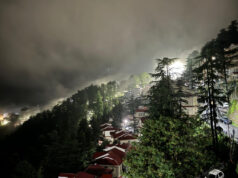Himachal sees 30°C+ in plains; Una hits 37°C, Delhi crosses 40°C, relief likely after April 10
Unseasonal heat continues to grip large parts of North India, with the India Meteorological Department (IMD) issuing a yellow alert for Punjab, Delhi, and Himachal Pradesh. Temperatures have soared significantly above normal across the region, with several districts recording daytime highs well into the 30s and beyond.
On Monday, Delhi recorded a maximum temperature of 40.2°C, 5.2 degrees above the seasonal average. The capital is likely to experience even hotter days, with the mercury expected to touch 42°C on April 8 and 9. The IMD has predicted some relief starting April 10, with day temperatures expected to hover between 37°C and 40°C through April 13.
In Himachal Pradesh, the heat has intensified, especially in the lower hills and plains. Una recorded the highest temperature at 37°C on Monday, while 13 other locations, including Kangra, Bilaspur, Nahan, Mandi, and Solan, also crossed the 30°C mark. Minimum temperatures across the state have risen by nearly four degrees, indicating persistent warm nights as well. Hot winds swept through several districts, including Kangra, Kullu, Mandi, and Solan, prompting a yellow alert for Tuesday.
Himachal Pradesh, known for its mild spring weather, is now experiencing uncharacteristic heat. On Monday, most of the towns in the lower region of the state recorded maximum temperatures above 30°C, with Una leading at 37°C. Other places like Kangra (35°C), Bilaspur (34.5°C), and Nahan (33.9°C) also saw a sharp rise in mercury. Even hill stations such as Shimla (26°C) and Manali (26.3°C) weren’t spared. The minimum temperature has risen by four degrees across many regions, contributing to warm nights and discomfort.
Although the weather remained largely clear on Monday in most parts of Himachal, including Shimla, the Meteorological Centre has forecast light to moderate rain and snowfall in the higher reaches of Chamba, Kullu, Kangra, Lahaul-Spiti, and Kinnaur districts from April 8 to 12. In the lower hills, scattered rain is also expected. The weather is likely to turn unstable again between April 10 and 12 due to a fresh western disturbance.
The rising temperatures are not limited to the hills. In Punjab, the heatwave has intensified, with day temperatures soaring above normal by 3.1 to 6 degrees in most districts. The highest maximum temperature recorded was 39.7°C. A yellow alert remains in effect across the state until April 10. Night temperatures too remained unusually high, with the lowest minimum—17.1°C—recorded at Ballowal Saunkhri in Ludhiana. Other areas reported deviations between 1.6°C and 4.4°C above normal.
The IMD has warned of another western disturbance affecting the western Himalayan region from April 8. This system is expected to cause a marginal drop in day temperatures and bring light to moderate rainfall, thunderstorms, lightning, and gusty winds in parts of Himachal Pradesh, Jammu and Kashmir, Ladakh, and Uttarakhand between April 9 and 11. Punjab may also see thunderstorms and rain on April 10 and 11.
Across the broader North Indian belt, the IMD observed that maximum temperatures on Monday were 5–8°C above normal in most parts of Jammu & Kashmir, Himachal Pradesh, Rajasthan, Delhi, and Ladakh, and many parts of Punjab and Haryana. Parts of Gujarat, Maharashtra, Madhya Pradesh, Chhattisgarh, Odisha, and Jharkhand also reported above-normal temperatures, ranging from 1 to 4°C above average.
According to the IMD, the average maximum temperature over northwest India in early April has been recorded at 28.99°C, compared to the normal of 27.64°C. The average minimum has also been higher at 17.79°C, above the usual 16.94°C. The persistent rise in both day and night temperatures is a matter of concern, particularly as it comes at a time when the region typically sees more moderate spring weather.
With clear skies, dry conditions, and the delay of rain-bearing systems, large parts of North India are experiencing an unusually early and intense summer.











